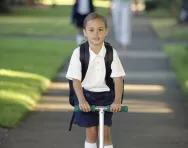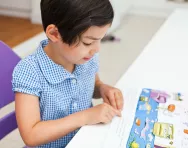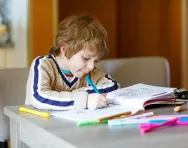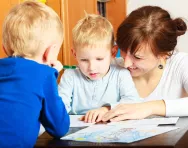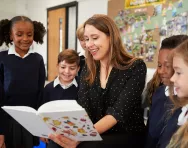Important update from TheSchoolRun
For the past 13 years, TheSchoolRun has been run by a small team of mums working from home, dedicated to providing quality educational resources to primary school parents. Unfortunately, rising supplier costs and falling revenue have made it impossible for us to continue operating, and we’ve had to make the difficult decision to close. The good news: We’ve arranged for another educational provider to take over many of our resources. These will be hosted on a new portal, where the content will be updated and expanded to support your child’s learning.
What this means for subscribers:
- Your subscription is still active, and for now, you can keep using the website as normal — just log in with your usual details to access all our articles and resources*.
- In a few months, all resources will move to the new portal. You’ll continue to have access there until your subscription ends. We’ll send you full details nearer the time.
- As a thank you for your support, we’ll also be sending you 16 primary school eBooks (worth £108.84) to download and keep.
A few changes to be aware of:
- The Learning Journey weekly email has ended, but your child’s plan will still be updated on your dashboard each Monday. Just log in to see the recommended worksheets.
- The 11+ weekly emails have now ended. We sent you all the remaining emails in the series at the end of March — please check your inbox (and spam folder) if you haven’t seen them. You can also follow the full programme here: 11+ Learning Journey.
If you have any questions, please contact us at [email protected]. Thank you for being part of our journey it’s been a privilege to support your family’s learning.
*If you need to reset your password, it will still work as usual. Please check your spam folder if the reset email doesn’t appear in your inbox.
Moving from Reception to Year 1: how it affects your child
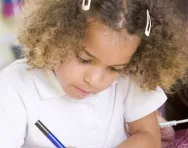
Their first year of school is rapidly drawing to a close; soon, your child will be making the move from Reception to Year 1. As a parent, the prospect of settling them into their new class is probably a lot less daunting than it was to get ready for their first day of school, but the transition from the Foundation Stage to Key Stage 1 can be a big deal for many children.
‘The jump from Reception to Year 1 can be more difficult than the transition between other school years, and schools and parents should bear this in mind,’ agrees Caroline Sharp, a principal research officer at the educational research organisation NFER, who co-authored a report on the impact on children of moving from Foundation Stage to Year 1. But why is it sometimes a tricky stage for children?
How Year 1 differs from Reception
When you ask your Reception child what they’ve done at school today, the answer is often, ‘I played.’ But their school day in Year 1 can be very different – and a bit of a culture shock.
‘In Reception, children get used to a play-based, free-flowing experience,’ explains Caroline. ‘They might be guided by the staff, but a lot of the time, they get to choose what they play with, when and with whom. They gravitate towards the things they enjoy doing, and how they spend their time is largely in their own hands.’
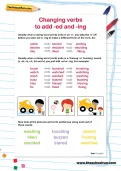
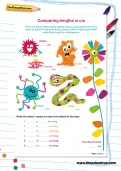
Start the Year 1 Learning Programme!
- Weekly maths & English worksheets direct to your inbox
- Follows the National Curriculum
- Keeps your child's learning on track
In contrast, the Year 1 learning experience tends to be more formal. The national curriculum sets out clear learning goals across every subject, and there are targets including beginning to learn certain times tables (by counting in 2s and 10s) and being able to spell a list of words accurately. Children are beginning to prepare for Key Stage 1 SATs, taken in Year 2, and are also expected to take a phonics screening check towards the end of Year 1.
‘The teaching is subject-based and adult-led, and children have less choice about what they do,’ Caroline explains. ‘There’s a lot more furniture and fewer toys, as children spend more time sitting at tables with a greater focus on pencil and paper tasks.’
Indeed, the NFER’s research found that children described Reception as a period centred around play, whereas they said that Year 1 was all about ‘work, work, work’.
The challenges of starting the second year of school
As well as getting used to a new classroom, a new teacher, and potentially new classmates – challenges that children face at the start of every school year – there’s a whole new set of skills that they’re expected to master in Year 1.
‘For a lot of children, the biggest challenge is that they’re expected to spend a lot more time sitting still and paying attention,’ Caroline says. ‘This sort of self-control can be very difficult for some children, particularly those who might be at a slight disadvantage already – for example, summer-born children and those with special needs.’
The level of work also becomes harder. ‘There’s more focus on formal skills like reading, writing and numeracy, and some children even comment on how difficult and tiring it is to hold a pencil for so long,’ Caroline says.
Children often miss the freedom that they had in Reception. In the NFER study, they commented that they were worried about not being able to play with their friends, and not knowing the words in their reading books. ‘Sometimes they just really miss being able to run around and let off steam, or playing with their favourite toy,’ Caroline adds.
The transition can be tough for parents, too. In Reception, there’s usually quite a lot of contact with the teacher; you might take your child directly into the classroom at the start of the day and collect them from there after school, giving you a chance to touch base about any issues. But in Year 1, it’s more likely that your child will line up in the playground, so you don’t get the same day-to-day opportunities to speak to the teacher.
What schools can do to help with the Reception-Y1 transition
Children settle better into Year 1 when the transition between the classes is gradual. ‘For example, the Reception teacher might introduce some of the more formal learning experiences of Year 1 towards the end of the year so they’re more familiar,’ Caroline explains. ‘Equally, some of the Reception practices – and even play equipment – may be continued into the start of Year 1, so it’s a more gradual process.’
Schools often have an induction process to help children settle into their new class. At the end of the Reception year, they’re likely to spend some time in the Year 1 classroom with their new teacher, so the environment isn’t a complete unknown at the start of the autumn term.
Continuity of routines is important too. For example, following a similar daily timetable in both Reception and Year 1, where activities like circle time, break and assembly happen at the same times, can help children feel more settled.
It’s also helpful if the school briefs parents on what to expect from Year 1. This could be in the form of a ‘meet the teacher’ evening, or a letter sent home to explain things like the type and level of work that children will be doing, the learning expectations and any major changes in routine. This can help you prepare your child for what’s to come.
How you can help settle your child into Year 1
There’s a lot that you can do to smooth the transition to Year 1 for your child. ‘You have a long summer holiday before the start of term, so take the opportunity to familiarise your child with the sort of things they’ll be doing at school,’ Caroline suggests.
These might include:
- Writing activities such as sending a postcard from holiday or writing an account of a day out.
- Working on telling the time.
- Beginning to encourage your child to count in twos, fives and 10s, and talking to them about concepts like ‘more than’ and ‘less than’.
- Doing some handwriting worksheets to improve their pencil control.
- Encouraging them to keep up with reading to you on a regular basis, for example by going to the library once a week and choosing new books.
You can also play down your own anxieties about the transition to prevent them rubbing off on your child. Try to avoid saying things like, ‘You’re going to have to work hard next year,’ and instead play up the good things: ‘Won’t it be exciting to have new books to choose from?’ or ‘It’ll be lovely to see all your friends again.’
‘Once your child has started Year 1, keep an eye out for signs that they might be struggling to settle,’ Caroline adds. ‘They might not always verbalise their worries, but if their sleep is disturbed or they’re reluctant to go to school, it’s worth talking to their teacher about what’s going on.’
Try to make home time a relaxed time, too. If your child has homework or reading to do, give them some time to burn off some energy before they sit down and tackle it. You might also want to scale back their after-school activities so your child has plenty of time for free play, rather than spending their leisure time in yet another structured setting.
‘Usually, any teething problems are minor, but if you’re concerned about your child after the first couple of weeks, bring it to the teacher’s attention,’ advises Caroline. A child who’s settled and happy is ready to learn, and that’s the outcome that every teacher and parent is looking for.
